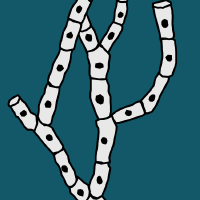Topic Menu
► Topic MenuTopic Editors

2. ALiCE—Associate Laboratory in Chemical Engineering, Faculty of Engineering, LEPABE—Laboratory for Process Engineering, Environment, Biotechnology and Energy, Faculty of Engineering, University of Porto, Porto, Portugal

2. Life and Health Sciences Research Institute (ICVS), School of Medicine, University of Minho, 4710-057 Braga, Portugal
Infectious Diseases
Topic Information
Dear Colleagues,
Infectious diseases are a critical and increasing global threat, with a high rate of morbidity, mortality, and healthcare costs. By 2050, 10 million people will die per year as a result of infections, since resistance to drugs is continuously increasing.
Understanding the development and evolution of infections is crucial for the treatment and to explore novel therapeutic responses. In addition, searching for new molecules with antimicrobial activity in surfaces (e.g., hospitals) is also a key factor.
This topic is intended to cover all subjects related to infectious diseases (bacteria, fungi, virus, parasites), pathophysiology, host–pathogen and immune response, new compounds with antimicrobial activity, and innovative approaches to cut multi- and pan-drug resistance events. Finally, methods and models to study infectious diseases will also be an important matter.
Original basic and translational findings are welcome. In addition, case reports and review manuscripts are also opportune.
We welcome submissions that cover, but are not limited to, the following topics:
- Pathogenesis and virulence of bacteria, fungi, parasites and virus;
- Advances in the pathophysiology of infectious diseases;
- Chronic and acute infections;
- Nosocomial infections;
- Novel experimental models to study infectious diseases;
- Microbiota/microbiome and its relationship with the development and evolution of infectious diseases;
- Host–pathogen relation;
- Immune response related to infections;
- Therapeutic response to common and novel drugs;
- Methods to evaluate the progress of infections;
- Methods to evaluate the response to drugs;
- Bioengineering novel drugs;
- Antimicrobial coatings for surfaces.
Prof. Dr. Célia Fortuna Rodrigues
Prof. Dr. Natália Cruz-Martins
Topic Editors
Keywords
- chronic infections
- acute infections
- nosocomial infections
- host–pathogen relation
- immune response
Participating Journals
| Journal Name | Impact Factor | CiteScore | Launched Year | First Decision (median) | APC |
|---|---|---|---|---|---|

Biomedicines
|
3.9 | 6.8 | 2013 | 17 Days | CHF 2600 |

Viruses
|
3.5 | 7.7 | 2009 | 18.6 Days | CHF 2600 |

Journal of Fungi
|
4.0 | 8.4 | 2015 | 18.2 Days | CHF 2600 |

Microorganisms
|
4.2 | 7.7 | 2013 | 15.2 Days | CHF 2700 |

Journal of Clinical Medicine
|
2.9 | 5.2 | 2012 | 17.7 Days | CHF 2600 |

Preprints.org is a multidisciplinary platform offering a preprint service designed to facilitate the early sharing of your research. It supports and empowers your research journey from the very beginning.
MDPI Topics is collaborating with Preprints.org and has established a direct connection between MDPI journals and the platform. Authors are encouraged to take advantage of this opportunity by posting their preprints at Preprints.org prior to publication:
- Share your research immediately: disseminate your ideas prior to publication and establish priority for your work.
- Safeguard your intellectual contribution: Protect your ideas with a time-stamped preprint that serves as proof of your research timeline.
- Boost visibility and impact: Increase the reach and influence of your research by making it accessible to a global audience.
- Gain early feedback: Receive valuable input and insights from peers before submitting to a journal.
- Ensure broad indexing: Web of Science (Preprint Citation Index), Google Scholar, Crossref, SHARE, PrePubMed, Scilit and Europe PMC.

